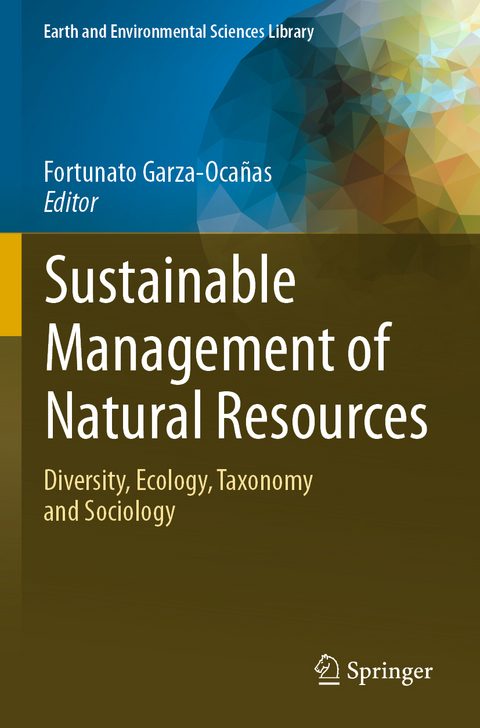
Sustainable Management of Natural Resources
Springer International Publishing (Verlag)
978-3-031-33396-5 (ISBN)
Climate change and human activities are impacting the environment around the world and there is a great need to update our knowledge of natural resources in order to sustain the livelihoods of rural communities and urban dwellers. Educational tools help people to understand the ecology, and the management of natural resources and to participate in actions to protect the environment. This book has a multipurpose focus regarding biodiversity, management, and conservation of the natural resources as species are linked in nutritional webs in the ecosystems. Ecology, diversity, conservation, and management practices such as plant species, native fish, edible mushrooms, and woody species are important for improving people livelihoods and incomes. It is expected that readers will learn to apply similar multipurpose approaches to natural resources in other parts of the world when their environments are affected by climate change or human activities.
This book introduces the importance of the sustainable management of natural resources to a wide audience, including policy decision makers, but also researchers.
Dr. Fortunato Garza Ocañas is a biologist with a Ph.D. from Oxford University. He is a professor and lecturer at the Faculty of Forestry Sciences, UANL, Mycologist with expertise on taxonomy and mycorrhizas.
Chapter 1. Conservation, Regeneration and Development of Species-Rich Meadows in Flooded Areas in Northwestern Germany.- Chapter 2. Population Density of the Endemic Trout (Oncorhynchus mykiss nelsoni) and Its Relationship with the Habitat in the Sierra San Pedro Mártir, Baja California, Mexico.- Chapter 3. Mayan Truffles: Notes on the Hypogeal and Subhigeal Fungi of the Peninsula of Yucatan, Mexico.- Chapter 4. Bioenergetic Potential of the Huizache Vachellia Farnesiana (L.) Willd.- Chapter 5. Macromycetes Associated with Three Types of Vegetation in the Municipality of Rayones, Nuevo León.- Chapter 6. Social Capital in the State of Nuevo León as a Tool for Sustainable Forest Development.- Chapter 7. Effect of High Temperatures That Simulate Climate Change in the Germination of Seven Species of the Tamaulipan Thornscrub.- Chapter 8. Presence and Importance of Mesquite Prosopis laevigata (Humb.& Bonpl. ex Willd) M.C. Johnst in Northeastern Mexico.- Chapter 9. Edible Macromycetesof Chihuahua.Diversity and Nutritional Properties.- Chapter 10. Origin and Cultural Impact of Wild Chilli Pepper (Capsicum annuum L. var. glabriusculum) in Northeastern Mexico.- Chapter 11. Diversity of Macrofungi in the Forest Ecosystems of the Cumbres National Park.- Chapter 12. Diversity Of Symbiosis Oftween Species of Macrofungi and Insects in the Temperate Forest of Iturbide, Nuevo León.- Chapter 13. Interactions Between Macrofungals and Insects via Sporocarps in Three Types of Vegetation of the Municipality of Linares, Nuevo León, Mexico.- Chapter 14. Interactions Between Macrofungals and Insects in the Oak and Pine Forest in the Municipalities of Iturbide and Galeana, Nuevo León.
| Erscheinungsdatum | 15.09.2024 |
|---|---|
| Reihe/Serie | Earth and Environmental Sciences Library |
| Zusatzinfo | XXIII, 275 p. 107 illus. in color. |
| Verlagsort | Cham |
| Sprache | englisch |
| Maße | 155 x 235 mm |
| Themenwelt | Naturwissenschaften ► Biologie ► Ökologie / Naturschutz |
| Naturwissenschaften ► Geowissenschaften | |
| Schlagworte | Diversity • Ecology • forestry • socioeconomy • sustainability |
| ISBN-10 | 3-031-33396-9 / 3031333969 |
| ISBN-13 | 978-3-031-33396-5 / 9783031333965 |
| Zustand | Neuware |
| Haben Sie eine Frage zum Produkt? |
aus dem Bereich


